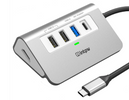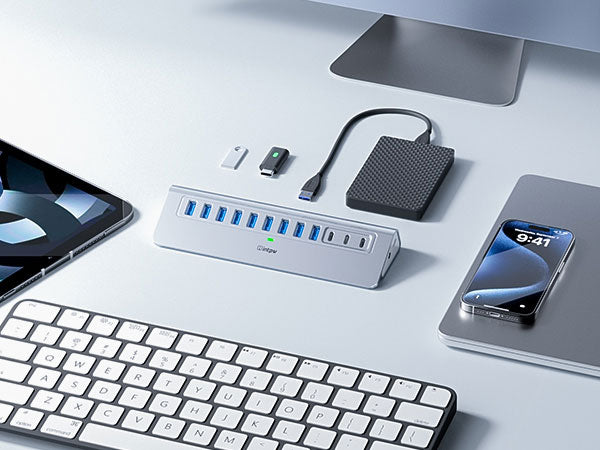
What's The Best and Safest Ways to Clean Your USB-C Port?
, by USintpw, 2 min reading time

, by USintpw, 2 min reading time
After using USB-C devices for some time, you might notice your phone stops charging mid-day, file transfers fail unexpectedly, or your favorite accessories don't connect properly. The same issues can occur with USB-C ports. Over time, these ports can gather dust, lint, and debris, leading to these frustrating connectivity problems. Cleaning your USB-C port carefully is essential to keep your devices running smoothly. Here’s how to do it safely and effectively.
A clogged USB-C port can result in:
Charging Problems: Debris can obstruct the connection, preventing your device from charging properly.
- Data Transfer Issues: Dirt can interfere with data transmission, causing files to transfer slowly or not at all.
- Physical Damage: Accumulated particles can damage the port's delicate components over time.
1. Compressed Air:
- What You'll Need: A can of compressed air with a nozzle attachment.
- How to Use:
- Turn off your device to prevent any electrical issues.
- Hold the can upright to avoid releasing any liquid.
- Insert the nozzle into the USB-C port and release short bursts of air.
- Repeat as necessary to dislodge loose particles.
*Note:* Avoid shaking the can, as this can introduce moisture into the port.
2. Non-Metallic Tools:
- What You'll Need: A wooden or plastic toothpick, or a plastic dental pick.
- How to Use:
- Ensure the device is powered off.
- Gently insert the tool into the port.
- Carefully scrape the inner walls to remove stubborn debris.
- Be cautious to avoid damaging the central connector pin.
*Tip:* If using a toothpick, consider shaving it down to fit comfortably into the port.
3. Isopropyl Alcohol (Optional):
- What You'll Need: 90% (or higher) isopropyl alcohol and a soft brush.
- How to Use:
- Dampen the brush with a small amount of alcohol.
- Gently brush the interior of the port to dissolve any sticky residues.
- Allow the port to dry completely before powering on the device.
*Caution:* Use alcohol sparingly to prevent moisture damage.
Metal Objects: Items like safety pins or paperclips can scratch internal components or cause electrical shorts.
- Cotton Swabs: Fibers can detach and become lodged inside the port, exacerbating the problem.
- Liquids: Direct application of liquids can lead to moisture damage.
- Use Port Covers: Silicone plugs can shield the port from debris when not in use.
- Store Devices Properly: Keep your device in a clean environment and avoid placing it port-side down in pockets or bags.
- Regular Maintenance: Periodically inspect and clean the port to prevent buildup.
By following these guidelines, you can ensure your USB-C port remains clean and functional, extending the lifespan of your device and maintaining seamless connectivity.

Subscribe to our emails